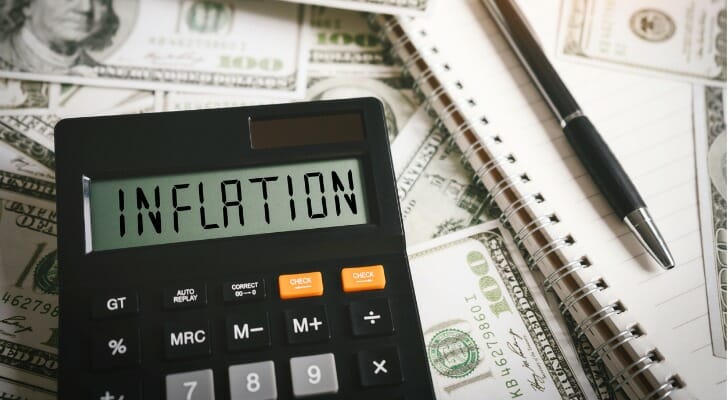Gone are the days of series I savings bonds paying almost 7% in interest. The U.S. Treasury announced Friday that the inflation-protected bonds would start paying investors 4.3% on May 1, down from the 6.89% that they’ve paid out over the last six months.
Since they were first introduced in 1998, series I savings bonds – also known as I bonds – have helped investors keep pace with inflation. They’ve especially come in handy in recent years, as inflation has reached levels not seen since the early-1980s. Here’s what you need to know about I bonds and Friday’s interest rate adjustment.
A financial advisor can help you determine whether I bonds or other inflation-protected securities are right for your portfolio. Find an advisor today.
About I Bond Interest Rates

An I bond’s interest rate is calculated using two separate rates – a fixed rate and an inflation rate. While the former stays the same for the duration of the bond, the inflation rate changes every six months. That’s because the latter is linked to the Consumer Price Index for all Urban Consumers (CPI-U).
As a result, when inflation increases, like it has in recent years, I bonds pay out more interest. When inflation falls, they pay out less.
On Friday, the Treasury raised the fixed interest rate for I bonds from 0.40% to 0.90% but dropped the semiannual inflation rate to 1.69%. This resulted in a combined interest rate of 4.3% for newly issued bonds.
Keep in mind that an I bond’s combined rate is calculated in two steps. First, the fixed rate is added to double the semiannual inflation rate. Next, the fixed rate gets multiplied by the semi-annual inflation rate. The two sums are then added together, resulting in the combined interest rate of an I bond. Here’s the formula:
[Fixed rate + (2 x semiannual inflation rate) + (fixed rate x semiannual inflation rate)]
What Falling Rates Mean

As inflation has climbed in recent years – peaking at 9.1% in summer 2022 – so did I bond interest rates. But as inflation continues to fall, the same will happen for I bond yields.
Friday’s rate adjustment comes one year after I bonds were paying investors a whopping 9.62%. In November, the Treasury raised the fixed rate from 0% to 0.40% but lowered the inflation rate to 3.24%. That brought the combined rate down to 6.89%.
While Friday’s adjustment results in lower overall interest rates, the fixed rate is now at its highest point since November 2007 (1.20%). Keep in mind that if the inflation rate increases again in another six months, those who purchase I bonds now will stand to benefit because their bonds will continue to pay out 0.90% in fixed interest plus the higher interest rate.
Bottom Line
Series I savings bonds or I bonds are inflation-protected debt securities issued by the U.S. Treasury. The bonds, which were previously paying 6.89%, will begin paying out 4.3% on May 1, the Treasury announced Friday. However, those who buy I bonds now will lock in a 0.90% fixed rate – the highest it’s been since 2007.
Tips for Managing Inflation
- Treasury Inflation-Protected Securities (TIPS) are another low-risk investment that can help soften the blow of inflation. Instead of the interest rate rising and falling with inflation, the principal of a TIPS bond increases with inflation. This differentiates TIPS from I bonds, whose interest rate is linked to inflation.
- A financial advisor can help you invest in I bonds, TIPS and other assets to protect your portfolio from rampant inflation. Finding a financial advisor doesn’t have to be hard. SmartAsset’s free tool matches you with up to three vetted financial advisors who serve your area, and you can interview your advisor matches at no cost to decide which one is right for you. If you’re ready to find an advisor who can help you achieve your financial goals, get started now.
Photo credit: ©iStock.com/DNY59, ©iStock.com/hobo_018, ©iStock.com/Khanchit Khirisutchalual
